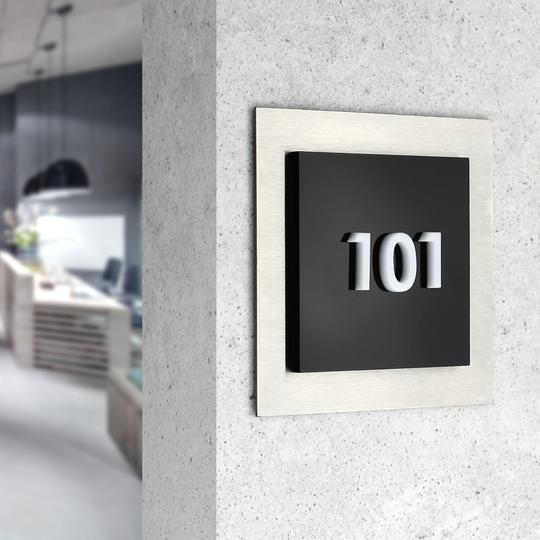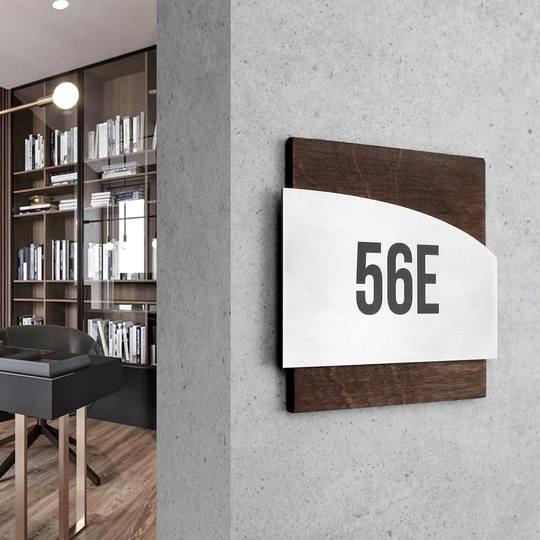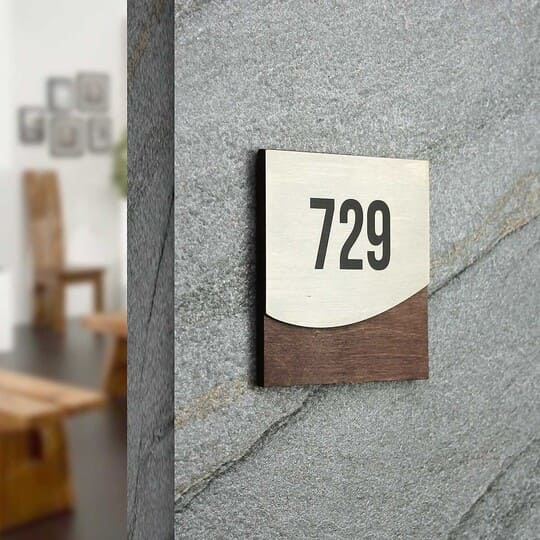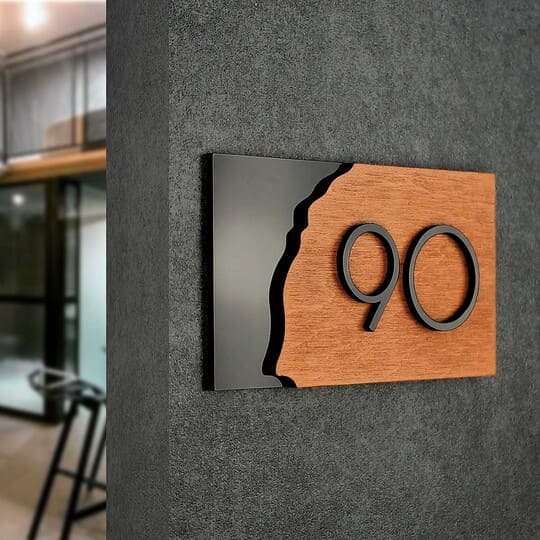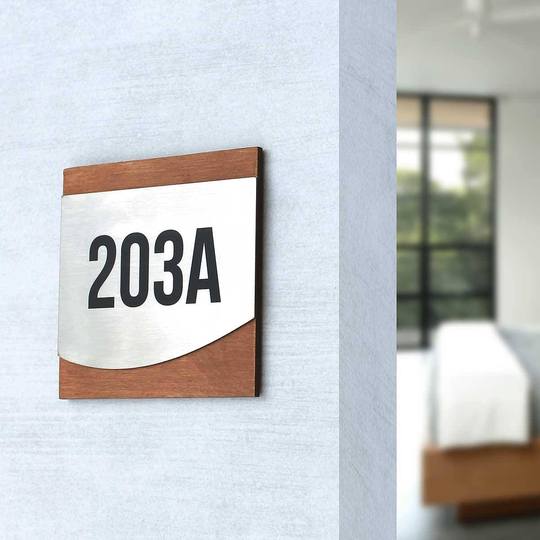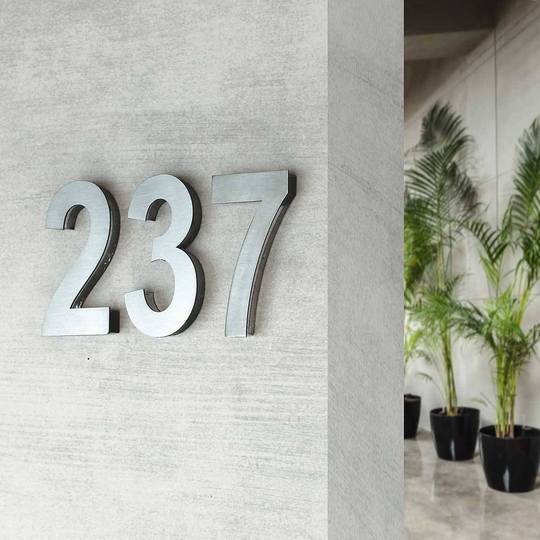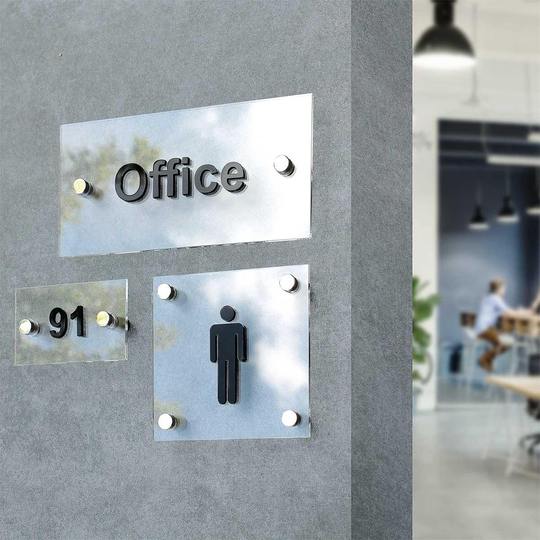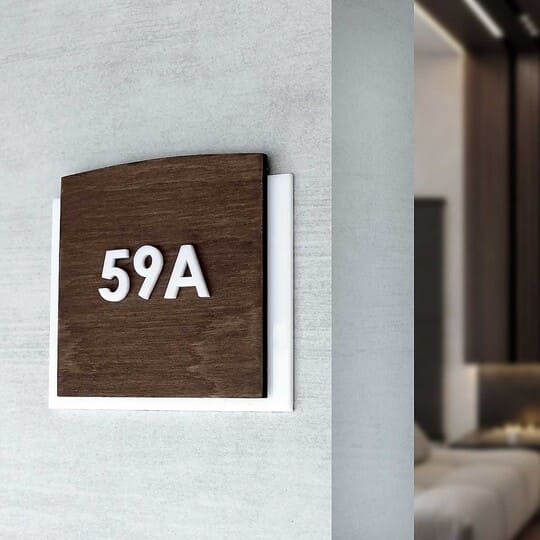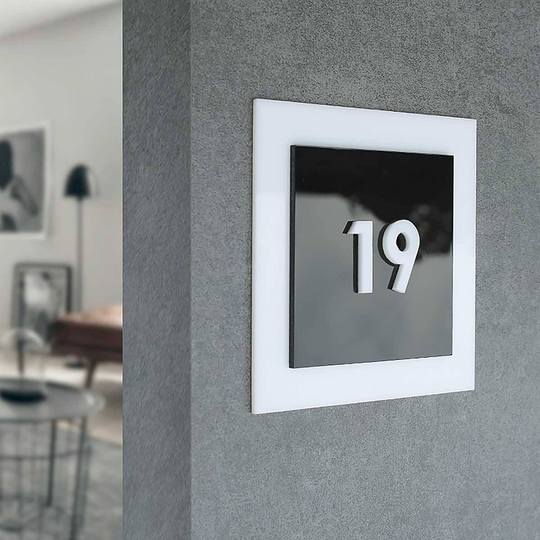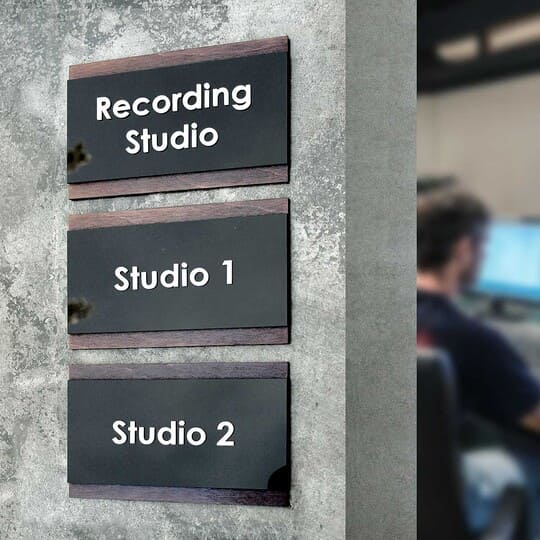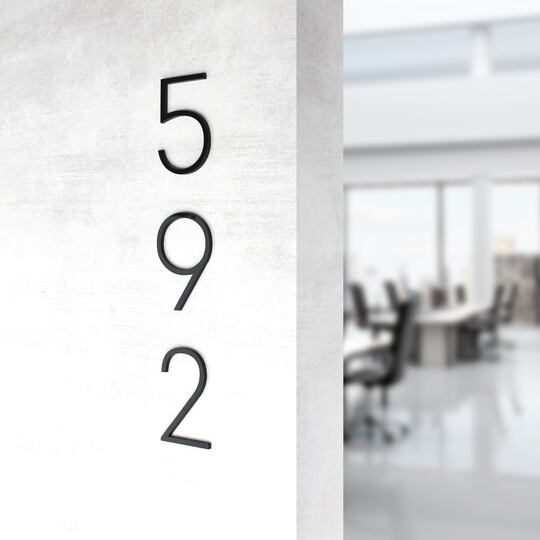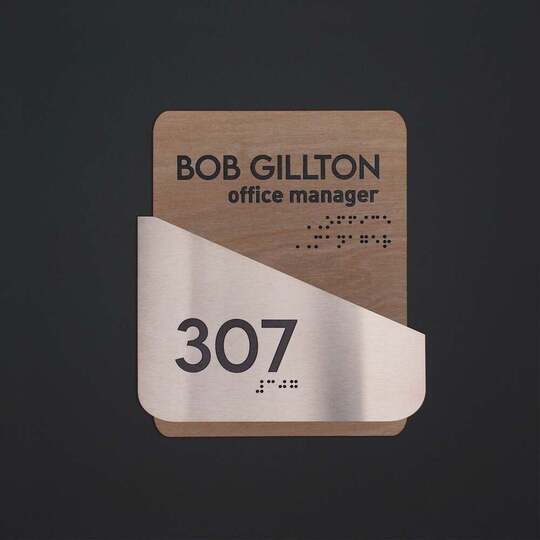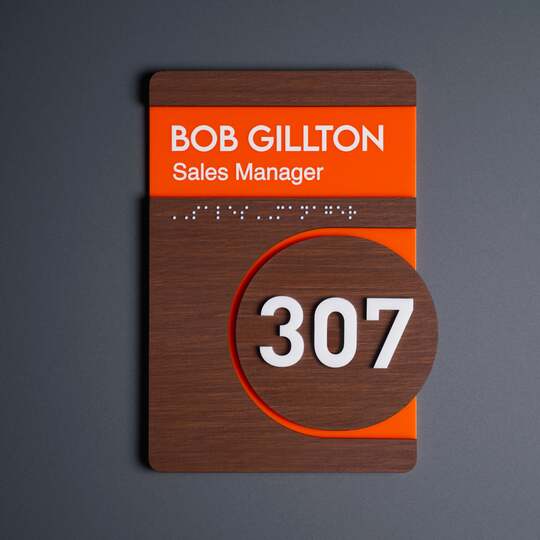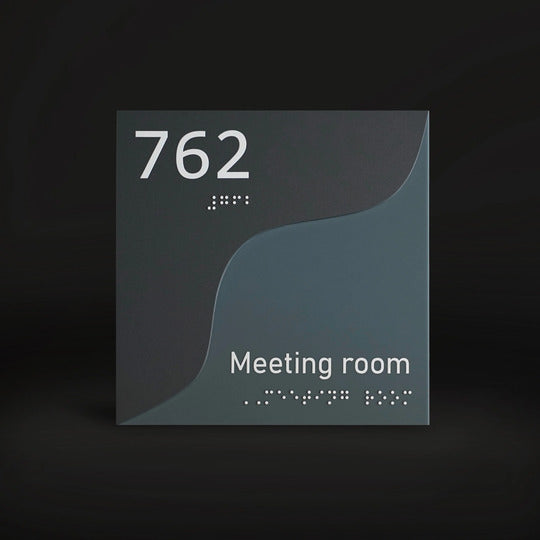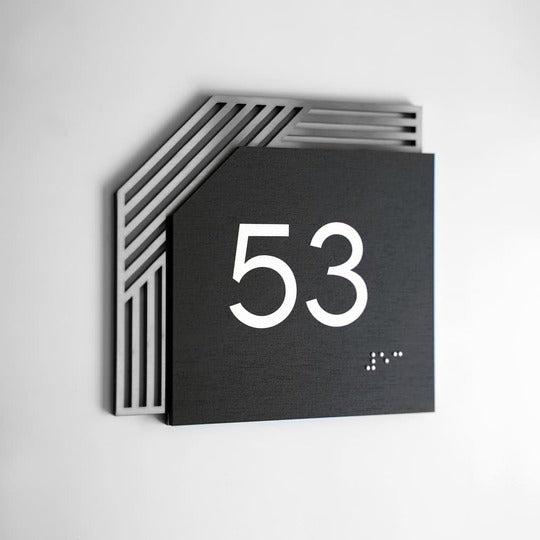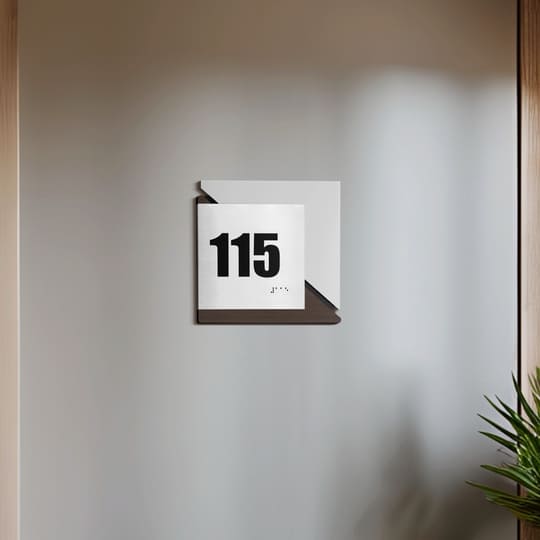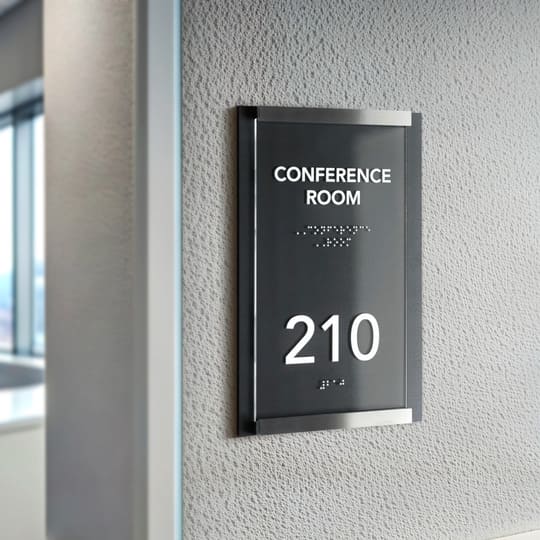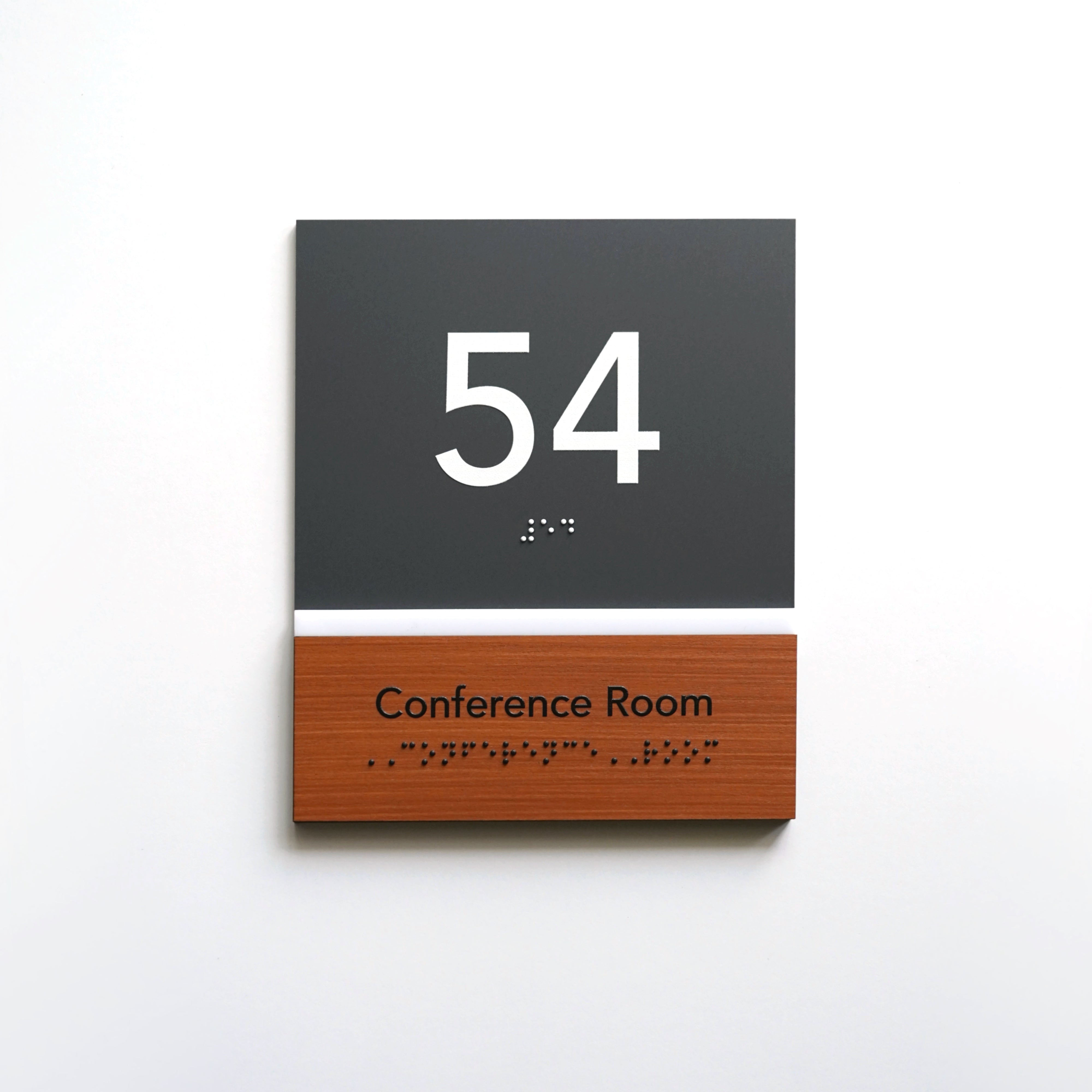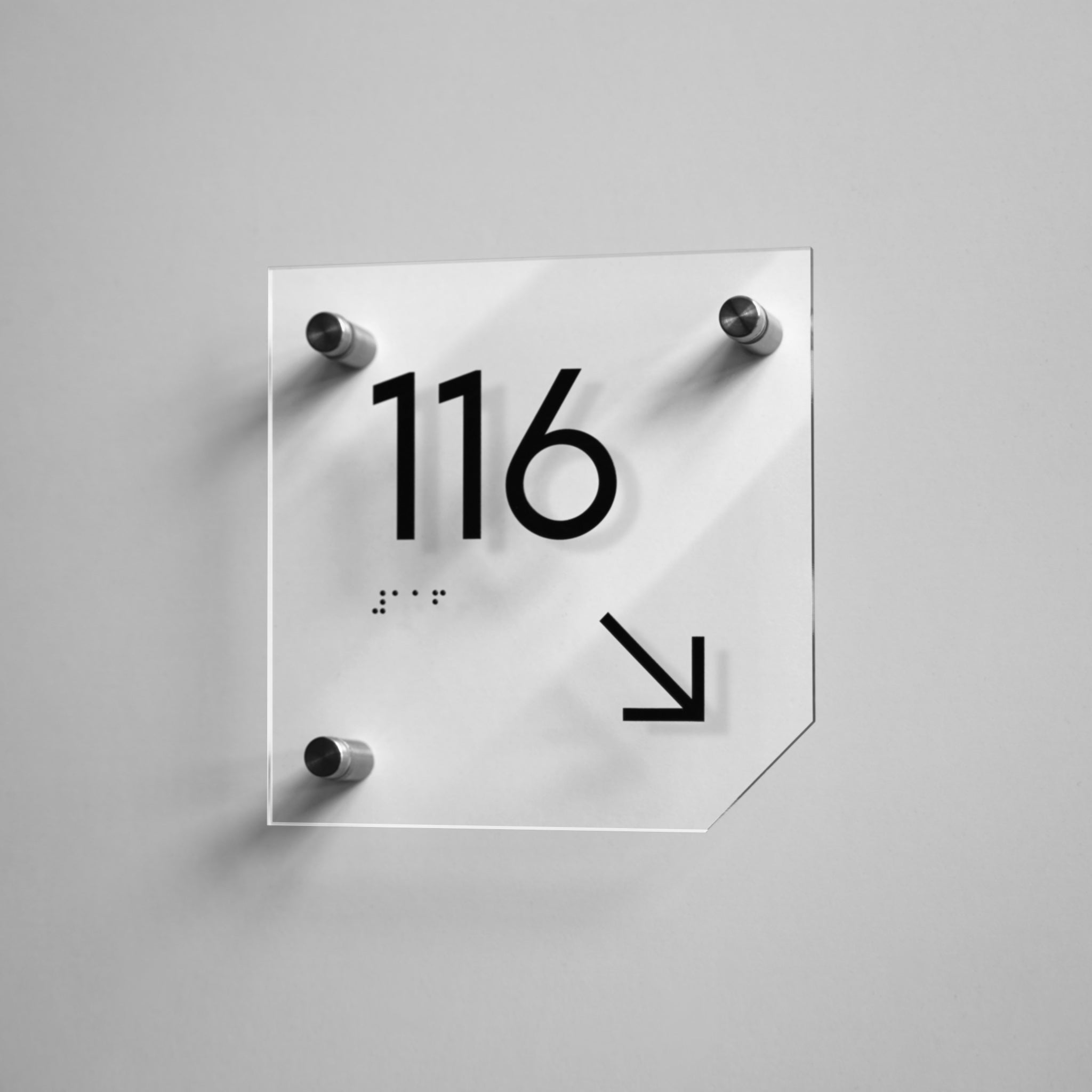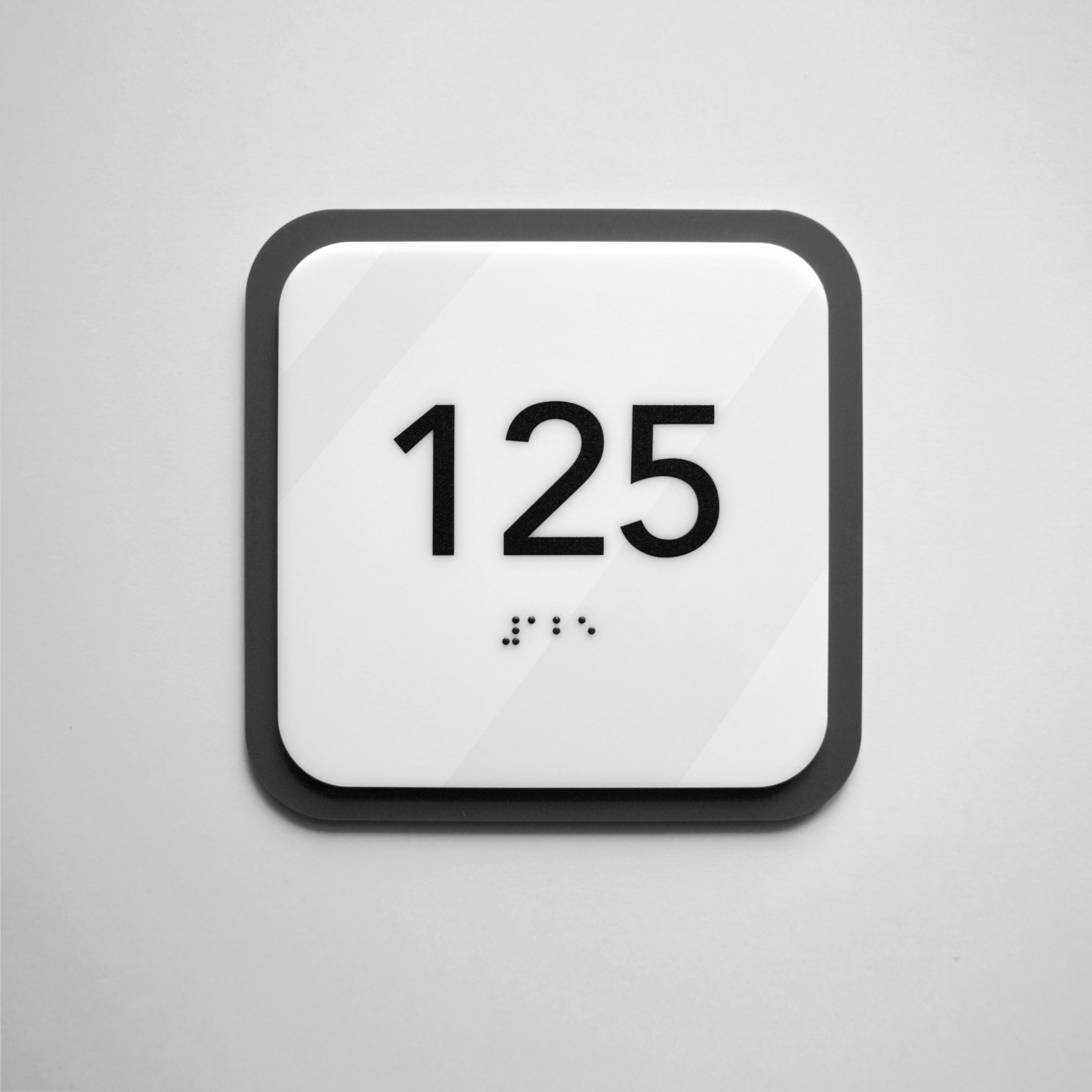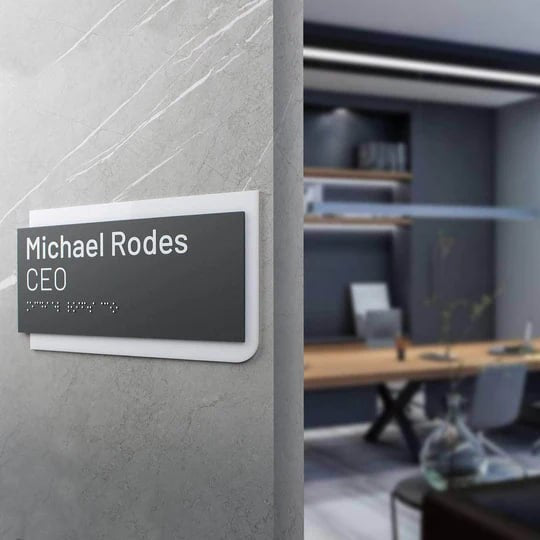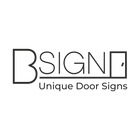
Latest trends in the design of business center office door signs
In today’s modern office environment, every detail matters. Business signs are no longer just a means of direction.They have become part of the brand identity, shaping the first impression of the company, creating an aesthetic atmosphere in the office building, and supporting harmony between interior and architectural solutions. Modern signage trends are driven by designers, architects, and developers who aim to combine functionality, status and style. Many companies now pay special attention to eco-friendly signs, reflecting their commitment to sustainability.

Concise and minimalist signs in the design
One of the leading trends is the rise of featuring clean shapes, matte finishes, and subtle color combinations. Minimalist decorative elements strike a balance between functionality and style. They have a harmonious look on the office doors, emphasizing the modernity of the space without overwhelming the interior.
Such solutions have another advantage: they are versatile. Minimalist plates easily complement strict corporate styles in large companies as well as creative office spaces where lightness and dynamism are important. The lack of unnecessary decoration keeps them relevant for years, making them especially valuable for business centers investing in long-lasting interior elements.
In an office environment, visual appeal matters — but so does functionality. That's why easy-to-read sign fonts have become the standard in modern design. They provide quick perception of information at eye level, help visitors navigate complex spaces, and reduce the risk of confusion in high-traffic areas. This is especially important for conference rooms, shared spaces, and meeting rooms — areas frequently visited by new clients and business partners.
Another key feature of this type of directional decor element is its ability to remain discreet while still looking stylish. They do not distract attention from the interior but create a sense of spatial completeness. A well-balanced mix of muted tones and matte finishes helps create an atmosphere of elegance and order in the office.
For architects and designers, this is the perfect tool to unify diverse zones into a cohesive system. For businesses, it’s a way to demonstrate attention to detail, which gives customers and visitors an impression of the brand's professionalism and reliability, reinforced by the correct use of logos.

Natural signage materials: wood, acrylic and stainless steel
Each year, the popularity of materials with natural textures grows. Combining wood with stainless steel results in elegant, highly durable plates. Acrylic decor element adds lightness, while wood plates bring warmth — making each piece a functional and aesthetic part of the interior.
This blend of materials creates the perfect balance between strictness and comfort. Steel emphasizes a company’s reliability and modernity, wood brings a sense of approachability and a human touch. Acrylic elements offer transparency and visual ease that are especially valuable in large office spaces where harmony between different styles is essential.
These modern signage solutions help shape a unified image of the office building, fostering trust among clients and visitors. They integrate seamlessly into various styles — from classic interiors to ultra-modern minimalism. The use of wood and steel ensures long-lasting plate, as these materials resist wear and maintain their visual appeal — even in high-traffic areas.
Natural signage materials have become synonymous with a responsible approach to design. They demonstrate the company's respect for quality, durability and sustainability. For visitors, this is a signal that the business is investing not only in functionality, but also in the beauty and ethics of its space.
For designers, working with such materials opens up creative possibilities — combining textures, playing with contrasts, or achieving harmony with other interior details. And for business owners, it is also a way to emphasize the uniqueness of the brand with the help of details that are visible to each client already at the entrance.

Geometry and shapes of signs in interior design
While classic rectangles remain relevant, designers are increasingly experimenting with asymmetry and polygons. The shapes of decorative elements directly influence how a space is perceived. For example, clean, strict lines are associated with order and stability, while unconventional geometry emphasizes a company’s creativity.
Today, office interiors often feature details that go beyond traditional standards. Triangular, trapezoidal, and asymmetrical office signs have evolved into decorative elements, while still performing their directional function. They add dynamism to interiors, make spaces feel more modern, and highlight the uniqueness of the brand.
Such solutions are especially effective in high-traffic areas, where functionality needs to go hand in hand with visual impact.
Custom signs for business are a way to demonstrate a company’s individuality. They allow architects and designers to realize their own concepts and make even small elements of the interior part of the overall idea. Such details work for the company's image no less than furniture or finishing materials, shaping impressions through the smallest elements.

Office door sign color combinations
Color becomes a brand communication tool. The most common signage color combinations feature dark tones paired with light accents. The contrast of black, white, and wood is both timeless and versatile. This approach reinforces the company’s brand identity, reflects a modern aesthetic, and maintains the level of restraint expected in a professional business environment.
Color plays a particularly important role in large office spaces. In these spaces, right signage must be instantly identifiable and visually clear. Clear visual accents help visitors navigate the space more efficiently and make the interior feel more structured. For example, dark plates on light walls help create a distinctive contrast, and light elements on wooden or dark surfaces add depth and make the space more elegant.
Such aesthetic signs fit well in reception areas, meeting rooms and large office spaces where it is important to make the right first impression. This is where every detail becomes part of the overall visitor and customer experience. If the colors are chosen harmoniously, they emphasize the professionalism of the brand and form a sense of stability and reliability.
Correct color combinations make it possible to strengthen the brand identity and create a cohesive spatial experience. In the business environment, this attention to detail demonstrates that the company cares not only about functionality, but also about the emotional impact that employees and visitors receive. As a result, even a small detail, such as office decor elements, can be a powerful tool in brand communication.

Signage fonts: readability and style
Text on door plates must be legible from a distance. That’s why modern designs rely on simple and modern fonts for plates. The main emphasis is on clarity and easy perception. Concise messaging on decor elements reduces visual noise that could distract visitors.
In business spaces where ensuring safety and quick orientation are key, easy to read fonts for signs are essential. They guarantee eye-level visibility and enhance navigational efficiency, which is especially necessary in high-traffic areas such as office floors with multiple rooms, corridors, and exit zones.
Simplicity in font choice doesn’t mean sacrificing style. On the contrary, a well-chosen font becomes part of the overall brand identity. It reflects the character of the company. For example, strict and sharp fonts convey professionalism and reliability, while softer, rounded styles highlight openness and friendliness.
Moreover, signage fonts must take into account the conditions of use. In large office spaces with long corridors, good visibility from different distances is crucial, and in meeting rooms or reception areas, the font may be slightly more refined to maintain the overall aesthetics of the space.
In today's office environment, readable fonts are becoming the standard as they combine simplicity, functionality and visual harmony. This is yet another proof that even the smallest design elements can significantly impact user comfort and the overall experience of both visitors and staff.

Additional features: custom signage solutions
Modern businesses are increasingly focused on personalization. Among the most popular options are QR code signs, which allow companies to provide directions or integrate additional digital information about the space.
Another strong trend is Braille signs, which enhance accessibility features and make office spaces inclusive. Many companies are already incorporating Braille into their office decor element, recognizing the importance of accommodating all users and reinforcing their commitment to social responsibility.
Logo signs for businesses are equally in demand, strengthening brand identity and contributing to long-term recognition. Companies now pay attention to integrating logos in combination with ADA standards to ensure inclusivity.
Such custom signage solutions allow them to tailor design to their various purposes and needs.

Architectural signage design and interior cohesion
Interior signage design reaches its full potential when it complements the architectural style of the space.
Key advantages:
-
• Professional signs reinforce architectural intent and maintain stylistic unity.
-
• Matching the color palette and materials makes navigation feel like a natural part of the space.
-
• A cohesive system improves orientation and enhances the aesthetic of the office environment.
-
• Consistency in details creates a positive experience for both visitors and employees.
When designed with architectural harmony in mind, aesthetic signs do more than provide directions — they contribute to making spaces both functional and visually complete.

Why these trends matter
In 2025, premium business signage is no longer a minor detail — it’s a strategic tool. It shapes first impressions, influences how a brand is perceived, and even impacts the efficiency of the office environment. After all, it is the details that make up the overall impression of the company.
Modern signage performs several functions simultaneously:
-
• Navigation function. Helps users quickly orient themselves in large office buildings and business centers. This is especially critical in high-traffic zones: near elevators, conference rooms, shared spaces, and floors with multiple offices.
-
• Brand support. Even the smallest element, when designed in a unified style, reinforces brand identity and creates a sense of unity across the space.
-
• Aesthetics and comfort. Well-designed products add elegance and a sense of completeness to the office environment. They don’t distract — they create a sense of order and professionalism, becoming an invisible yet impactful element of comfort for customers, visitors and employees.
For companies, investing in such solutions is a way to build long-term brand reputation.
-
• In offices where every detail is thoughtfully considered, trust and a sense of reliability are fostered.
-
• Employees feel that their workplace is thoughtfully organized, which boosts motivation and productivity.
-
• Even simple navigation solutions become a source of inspiration for architects and designers seeking new ideas for harmonious interiors.
In today’s competitive environment, details carry the same weight as strategic decisions. And plates that were seen as purely functional elements, have become an essential part of architectural signage design for business environments.
We invite you to create a space where style and functionality work together to strengthen your image. Sign up for a consultation and receive personalized recommendations on the latest signage trends from our design team.
